Have you ever been out for a walk with your dog, minding your own business, when suddenly they barked and lunged at other dogs or people? If so, you’re not alone. This is a very common problem that many dog owners, even myself, face, and it’s one that can be quite frustrating.
The good news is that leash aggression is a problem that can be fixed with the right training and management techniques.
Why Your Dog Is Aggressive on a Leash
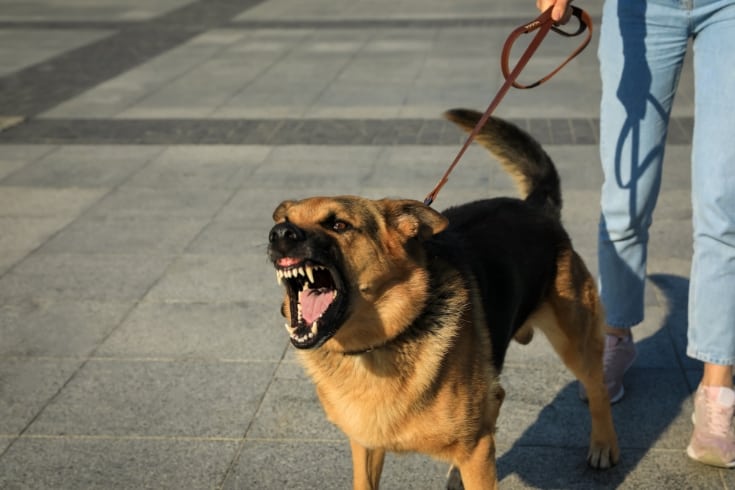
Leash aggression is when a dog becomes aggressive (a dog barking at other dogs, lunging, growling, barking, etc.) when they are on a leash. It’s important to note that this doesn’t mean that your dog is aggressive all the time—many dogs who are perfectly friendly off-leash can become aggressive when they’re on a leash.
There are many factors that can contribute to leash aggression, including fear, anxiety, territoriality, excitement, and even hunger or thirst. Sometimes, leash aggression may be caused by a previous traumatic experience, such as being pulled too hard on a leash or being attacked by another dog while on a leash.
Whatever the cause, leash aggression can be dangerous for both you and your dog. Not only does it put us at risk of being bitten or pulled down, but it can also make walks an unpleasant experience for everyone involved. That’s why I believe it’s extremely important to understand what causes leash aggression and how you can prevent it.
Get to the Root of the Problem
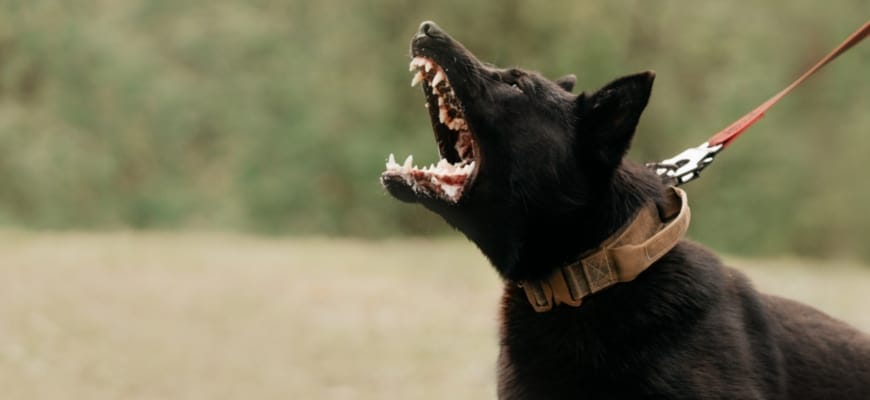
The first thing you’ll want to do is get to the root of the problem. Try to figure out what is causing your dog’s leash aggression. For one of my dogs, we used training and desensitization, as he was very reactive toward other dogs.
Ask yourself if something specific seems to trigger their aggressive behavior. If so, try to avoid those triggers if at all possible.
- Ask your veterinarian to rule out any medical issues as the root cause of the aggression.
- Observe your dog carefully to see if there are any specific situations or stimuli that trigger the aggression.
- Work with a qualified behaviorist to help you address and correct the underlying causes of leash aggression.
- Be patient and consistent in your efforts, and remain positive and upbeat even when progress is slow.
- Reward your dog for good behavior when walking on a leash, and provide plenty of positive reinforcement to help him overcome his leash aggression.
Calm Them Down
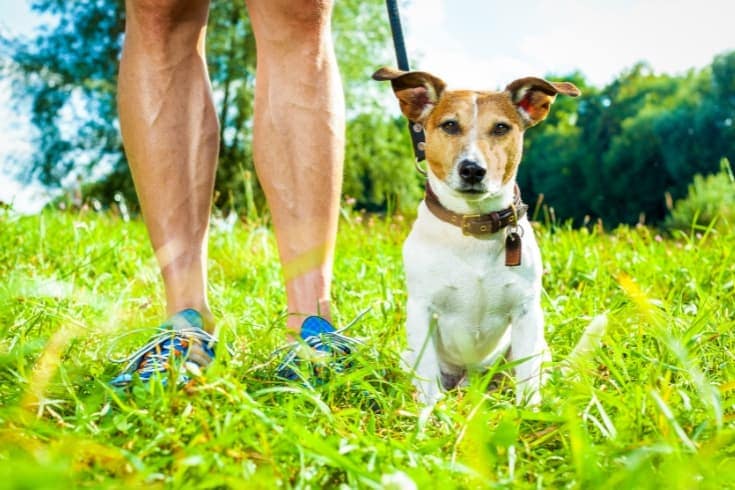
If your dog is simply getting too excited on walks, you may need to work on teaching them some impulse control. We can do this through basic obedience training exercises like sit/stay and down/stay. You can also try using treats or toys as rewards for good behavior. A few other ways you can calm them down; I’ve tried would be:
- Use a calming spray or lotion
- Play calming music
- Distract them with a toy or game
- Get them outside for a walk or run
- Give them a treat or snack
Fear and Anxiety
If your dog is acting aggressively out of fear or anxiety, you’ll need to help them learn to relax and feel more comfortable in situations that make them anxious. This will require some behavior modification training and may take some time and patience. You may also want to consult with a professional trainer or behaviorist for help with this.
There are many reasons dogs may have fear and anxiety. Some common reasons include:
- Having a traumatic experience, such as being attacked by another dog
- Being neglected or abused
- Having a lack of socialization
- Being exposed to loud noises or sudden movements
- Being left alone for long periods of time
Causes of Leash Aggression
As we mentioned before, fear and anxiety are two common causes of leash aggression. Dogs who are fearful of other dogs or people may become aggressive when they’re on a leash because they feel trapped and vulnerable. Similarly, dogs who are anxious about walking may become aggressive to get away from whatever is causing them anxiety.
In other cases, dogs may become aggressive on a leash because they’re excited or territorial. Dogs who love meeting new people and animals may become so excited when they see someone that they lunge and bark uncontrollably.
Similarly, dogs who are protective of their home territory may view other people or animals as intruders and become aggressive in driving them away.
Managing Leash Aggression
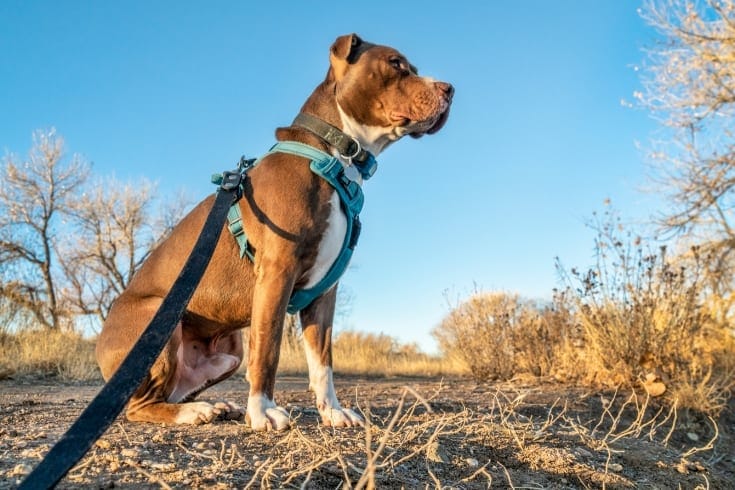
Once you know what’s causing your dog’s leash aggression, you can start working on management techniques. If your dog is afraid or anxious, there are several things you can do to help them feel more comfortable on walks.
First, try lengthening their leash, so they don’t feel so restricted. This will give them a sense of freedom while still keeping them close enough to you that they feel safe.
You can also try using a harness instead of a collar, as this will distribute their weight more evenly and make them feel less restrained. And finally, make sure you’re walking at a pace that’s comfortable for them – not too fast and not too slow.
If your dog is acting aggressively because they’re trying to assert their dominance over you, there are a few things you can do to show them you’re the alpha in the relationship. First, make sure you’re walking in front of them instead of behind them. This will help them understand that you’re leading the way, and they should follow your lead.
Second, keep treats with you on walks and only give them to your dog when they behave well. This will reinforce good behavior and help them understand they need to listen to you in order to get rewards.
Finally, if they act aggressively, calmly but firmly tell them “no” and put them in a sit-stay until they calm down. This will show them that their aggressive behavior will not be tolerated, and they need to listen to you in order to avoid being corrected.
Here are some common issues I’ve seen people have in dealing with leash aggression:
- Lack of socialization
- Fear of strangers
- Territorial aggression
- Anxiety or arousal
- Poor leash manners
Prevention Tips
The best way to prevent leash aggression is to train early and be consistent with your commands. If your dog is still a puppy, begin teaching them basic obedience commands like sit, stay, come, etc., as well as how to walk calmly on a leash.
It’s also important to socialize your puppy early so that they’re comfortable around other people and animals. The more exposure they have to different situations (positively), the less likely they are to become fearful or anxious in new situations later in life.
If your dog is already exhibiting signs of leash aggression (barking, growling, lunging), there are still things you can do to help them overcome their fear or anxiety.
One option is desensitization training. This involves gradually exposing your dog to the thing they’re afraid of (e.g., people or animals) in small doses until they no longer react with fear or aggression. Another option is counterconditioning. This involves teaching your dog to associate the thing they’re afraid of with something positive (e.g., treats).
If you’re not sure how to get started with training your dog yourself, there’s no shame in seeking professional help from a qualified trainer or behaviorist. They’ll be able to create a customized training plan that’s tailored to your dog’s needs.
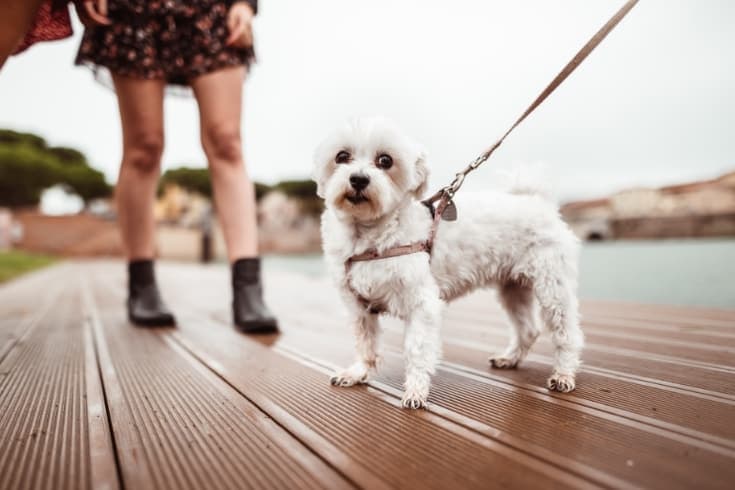
The best way to prevent leash aggression is to train your dog from an early age. Socialization and obedience training are both important for helping your dog learn how to behave properly on walks. However, even if you didn’t start training early on, it’s never too late to start! Here are some tips on how to leash train a dog:
- Take things slowly – don’t do too much too quickly. Start by taking short walks around the block with just you and your dog (no other people or animals).
- Make sure your dog has a good foundation of basic obedience commands before you work on leash manners (sit, stay, come, down, etc.). This will make it easier for them to focus on what you’re asking them to do when there are distractions like other people or animals around.
- When you encounter other people or animals while out walking, have your dog sit/stay while keeping a respectful distance between you and the trigger for their aggression (another person or animal). Once your dog has remained calm for 30 seconds, give them a treat and praise them lavishly! Repeat this process until your dog is responding well consistently, then gradually begin reducing the distance between you and the trigger until eventually, your dog can remain calm while right next door to whatever was triggering their aggressive behavior originally.
- If at any point during training your dog becomes overly stressed or seems like they’re not enjoying themselves, take a step back. Remember that training should be fun for both you and your furry friend!
Conclusion
Leash aggression is a problem that many dog owners face in their lives. While it can frustrate you and can be dangerous, there are ways to manage and prevent it with the right training and management techniques.
If you think your dog may experience leash aggression, contact a certified animal behaviorist or trainer for help in developing a behavioral training program specifically tailored to your dog’s needs.
